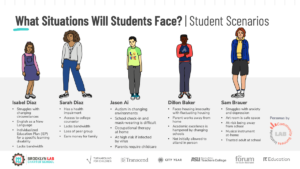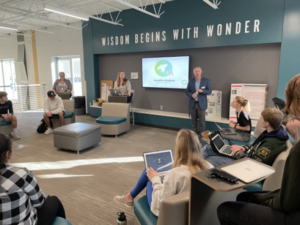Customize Learning for Student Success
Jose is a Junior. It’s March and the clock is ticking. He has 26 hours of Geometry instruction left. Jose still struggles with his reading and had to take Algebra 1 twice to pass it with a C.
Jose’s older brother James fell behind and was out of school for a while but he completed Geometry in 96 hours over 90 days last fall in an AdvancePath academy (I’m a director). Online curriculum and a focused and supportive academic environment allowed James to earn credits at twice the rate of his younger brother.
About 100 years ago, a committee decided James and Jose should get 120 hours over 180 days to learn Geometry. That may be right for some, but too few for Jose and a waste of time for kids that can move faster. Standardizing time and forcing students to repeat courses and grades when they fail may have made sense a century ago but today it is an academic disaster and a financial waste—seat time requirements must go.
The state chiefs (CCSSO) and the online learning association (iNACOL, I’m a director) hosted a summit to ask key questions about competency-based learning and to develop plans to advance . Rich DeLorenzo, Reinventing Schools Coalition, kicked off the meeting with a plea to focus on kids and learning not time and tradition.
That doesn’t mean asking teachers to work harder, it means working smarter. It’s time for Digital Learning Now, where most students learn in environments that blend self-paced online learning with onsite support.
Instead of asking teachers to differentiate instruction for every one of 30 students, schools should use personalized digital learning and should empower teachers to analyze, adjust, and provide one-on-one support when and where it’s needed.
Students that are struggling should get more time—probably twice as much academic time on core subjects—by extended the day and the year, in part, by providing mobile technology.
Funding that reflects the level of challenge should follow the student to the best educational option.
An aggressive public and private research and development agenda should push innovations forward.
It’s time to replace stand-and-deliver with self-paced progress.
It’s time to replace fail-repeat with customize-for-success.








0 Comments
Leave a Comment
Your email address will not be published. All fields are required.